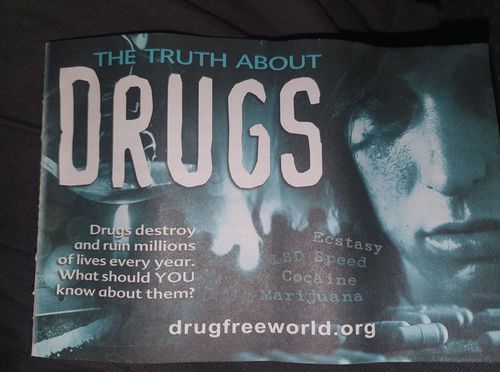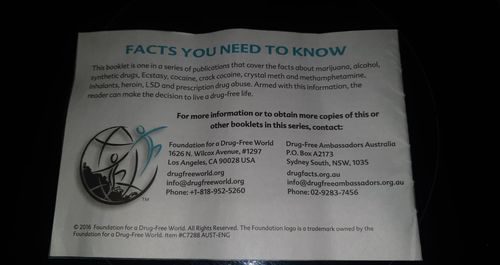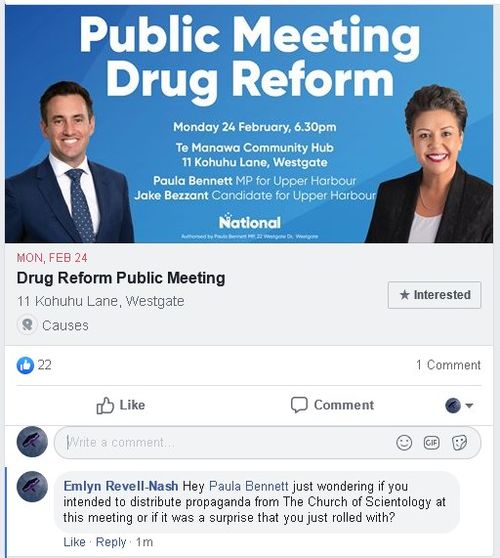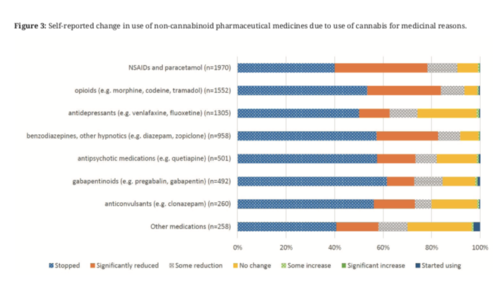Anyone who keeps an eye on evidence around cannabis and public health will be familiar with the Christchurch Health and Development Study. It's one of two local longitudinal studies frequently cited with respect to cannabis and youth development. But in a new article in the New Zealand Medical Journal, it is used for something different: attitudinal research about cannabis reform ahead of this years referendum.
The sample size – 899 – is that of a respectable poll. But it differs from a conventional opinion poll in some key respects: the most obvious of these being that everyone "polled" is 40 years old and was born in Canterbury.
Timeliness is another one: the research was conducted between June 2017 and June 2019. So it was almost all done before the May 2019 Cabinet paper on this year's referendum was published and some of it well before the coalition agreement in which a referendum was first announced. So several questions relate to an anticipated legal age of use of 18, rather than the proposed 20.
But it does signal where reform campaigners need to try and win the argument with middle New Zealand, and how difficult that could be.
The study finds 49.8% of the cohort against legalisation, 26.8% in favour and the remainer "neutral" on the issue. But a near-majority (47.8%) is in favour of decriminalisation and a 42% plurality believes decriminalisation would not increase drug problems in New Zealand, versus only 32% who believe it would.
This is somewhat in line with conventional opinion polling in 2017-18 – people believing that decriminalisation is a lower-risk option than legalisation and regulation. And yet the evidence increasingly is that the reverse is true, that legalisation allows for important regulatory controls that simply removing criminal sanctions does not. In Canada and some US states, actual of de facto decriminalisation regimes saw increases in youth use that stopped or reversed under legalisation.
So legalisation campaigners are talking to an audience that's not necessarily wedded to prohibition, but will need to convince doubters that legalisation is the better, safer option.
But the study's legalisation question also warrants attention. Its proposition is that "Cannabis should be legalised and available for sale to people aged 18 or over, like alcohol and tobacco." Does the comparison with the two problematic legal drugs taint the question?
Legalisation campaigners will need to convince doubters that the regime proposed in the referendum bill is not "like alcohol and tobacco", but in fact considerably stricter. (Which is objectively true.)
The study also shows overwhelming support for medicinal cannabis. More than 83% agreed or strongly agreed that "Doctors should be able to prescribe cannabis based products for medicinal purposes (eg, to relieve chronic pain) without restriction" and nearly 88% agreed or strongly agreed that "Cannabis or cannabis-based products can be an effective form of relief for people experiencing chronic pain or physical health problems." Only 2% of the cohort firmly believed that doctors should not be able to prescribe cannabis products.
But now that we have regulations controlling the production and prescription of cannabis products by fitting them within the existing pharmaceutical regime, does it look like the kind of medicinal cannabis people were thinking of?
Legalisation campaigners will need to convince doubters that the kind of medicinal cannabis (perhaps "therapeutic" is a better word than "medicinal") access they support might not ever happen without a "Yes" vote for broader legalisation.
The two strongest predictors for support for legalisation were regular use of cannabis at some point and use of any other illicit drugs at some point. Māori, people with experience of depressive illness and people with higher educational attainment were also more likely than others to favour legalisation.
–––
Professor Joe Boden, who did the media duties on the study, is also one of the authors of another academic article on legalisation published this month.
Facing the option for the legalisation of cannabis use and supply in New Zealand: An overview of relevant evidence, options and considerations is primarily a review of the evidence of legalisation in other jurisdiction – of which the authors clearly believe there is not enough.
They do, however state that "[l]egalisation offers some distinct advantages" over decriminalisation, "for example regulated use, products and user education, yet outcomes depend on essential regulation parameters, including commercialisation, and policy ecologies."
The tone sometimes seems to be that of the lead author, Auckland University's Dr Benedikt Fischer, who is not a prohibitionist but has been vocally concerned about commercial creep in North American regimes. The discussion for the article says of any permission for commercial production or distribution of cannabis that:
Based on experiences from other psychoactive substance policy fields, it is most likely that, in both direct and indirect ways, this will contribute to a markedly increased cannabis‐related adverse health and social harm burden in New Zealand under legalisation.
But the only evidence cited relates to alcohol sales. One study cited essentially compares shop-bought booze to home brew, which is relevant in some territories but not in New Zealand, and another looked at ED attendances in the wake of the Sale and Supply of Liquor Act 2012 and found that while the number of visits to liquor outlets increased after the Act, characteristics of drinking sessions that led to ED visits, including the amount consumed, did not change.
I'm not at all convinced on this evidence that the mere presence of business would lead to "markedly increased" adverse health outcomes. Especially under the very tight regulations proposed on use and sale in New Zealand – which the authors note are so strict as to be "questionable" in comparison with the rules on alcohol and tobacco – and given the provisions in the referendum bill that aim to curb market dominance and provide for community enterprise. The authors do, after all, note an absence of "apparent major or ‘catastrophic’ consequences" in even the most commercialised cannabis regimes.
The "hybrid" system in Canada, from which Dr Fischer hails, perhaps had commercial creep baked in thanks to its medicinal regime, which allowed large cannabis companies to grow and push marketing boundaries well before the federal government introduced general legalisation. Indeed, legalisation in Canada can even be seen as a bid to belatedly tie down a burgeoning grey market as much as a liberalisation.
It also seems notable that Canada's model is very popular among Canadians, while Uruguay's wholly non-commercial state monopoly struggles with logistics issues and is unpopular there, even among cannabis users.
All that said, the paper is a thorough and challenging summary of not only the evidence but the arguments for cannabis reform. It's worth your time.
–––
Oddly, the "Big Cannabis" problem in the Canadian system is basically overlooked in a public discussion paper published recently by NZIER , which offers "some facts and recommendations" ahead of our referendum, but offers scant consideration to licensing. That may be because it was published before the market allocation and licensing provisions arrived in the final version of our referendum bill, but it feels like a big gap – the more so because is bears directly on one of the paper's big conclusions: that cannabis prices will fall under legalisation. That really depends.
Cannabis is cheap to produce at scale, but the collapse in US prices seems mostly related to a level of oversupply that's actually destabilising the young industry. In Washington State, growers are now not only keen on limiting the number of licences, but happy to see the quantity allowed at different licence tiers reduced. Last year in Oregon, where the oversupply is even more prodigious, the government passed legislation last year allowing it to limit the number of licences issued when supply exceeds demand.
And demand for cannabis is clearly not unlimited. In Canada, the very modest growth in demand has been among occasional users and older people, while youth use has declined. The heavy users who consume most of the weed are just doing what they've always done, but more legally. Even in places, like Colorado, where overall use increased a bit more steadily after legalisation, it seems to have hit a hard plateau.
It would be fair to say the designers of New Zealand's system do not anticipate a big increase in production. Indeed, one of the stated aims of our regime is to reduce not only cannabis harms but cannabis production over time. As the NZIER authors observe, this may be incompatible with even the small increase in overall use likely under legalisation.
The NZIER paper also largely ignores the so-called "social equity" features of some US jurisdictions, which are clearly reflected in our bill, which addresses the particular harm suffered by Māori under prohibition. But it offers some interesting insights – especially on the gulf in carbon emissions between indoor-grown cannabis and outdoor. Cannabis production in New Zealand has steadily moved indoors as a consequence of police activity since the 1980s. The difference is strong enough to say that legalisation would be good for the planet.
NZIER also puts a value on the tax windfall from cannabis legalisation: near enough to half a billion dollars.
–––
Finally, let me link you to something that's not an academic publication or an economic analysis, but does deserve attention. It's a press release on behalf of Pearl Schomburg, the medicinal cannabis advocate I profiled recently in the Weekend Herald.
After the Herald story was published, Pearl had a lot of people contacting her for help. She was ready for this – we discussed it before I filed the story. As she says in the release:
"Since then my phone has not stopped ringing with patients needing help, most of them elderly. They feel like they have nowhere to turn and fear persecution. It really isn’t good enough. We need access to safe products now."
Yes, there is now a new medicinal cannabis regime: the regulations came into force halfway through the virus lockdown and they're pretty good. But the experience of other jurisdictions suggests that it will take at least three years to get up to speed, for locally-manufactured cannabis therapeutics to make their way through the process and for enough doctors to get comfortable with prescribing.
But some doctors are never going to prescribe, and most "green fairies" aren't going to be able to produce to GMP standard. Yet some of them are producing good, reliable cannabis products – I've seen the results of tests done on the quiet by ESR and I've seen enough patients, Pearl included, using those products as a substitute for bucketloads of pain medications that that were blighting their lives.
The problem is that there are also bad actors and bad – possibly even poisonous – products. And there's currently no way for patients to tell, or for producers to demonstrate their products are as advertised. Even if you believe that the therapeutic potential of cannabis is completely oversold, it's a harmful situation that needs fixing.
Pearl, a great-grandmother, doesn't see the need to draw a hard line between use for pleasure and use for relief, but this part of of the cannabis community really isn't about getting wasted. You're not going to get high off rubbing a balm on your sore bits – but as a cannabis preparation that balm comes with a harsher legal sanction than the $50 bag of buds you bought from your dealer. It doesn't make sense and I don't think it's line with what the public actually thinks.
But I think the right thing isn't going to happen here unless and until there is a "Yes" vote in the referendum. It's not just "vote yes so your grandmother doesn't get busted" – it's "vote yes so she doesn't get poisoned."
PS: If you want more like this, there's a Drug Foundation webinar on Thursday in which Pearl features. You can register here.





